These are my notes from Dr. Mitchel Resnick’s NECC 2008 presentation on July 2, 2008, entitled “Grassroots Creativity: Helping Everyone Become a Creative Thinker. Dr. Resnick is a professor at the MIT Media Lab. MY THOUGHTS AND REFLECTIONS ARE IN ALL CAPS.
Success in the future (individual, organizational, based on the ability to think and act creativity
– learning a fix set of skills and facts is not and will not be enough
– this also will lead to the happiest and most satisfying lives
– coming up with innovative solutions to the challenges of our lives
I get frustrated when I walk down to the local elementary school and community center near our MIT Media Lab
– we have mismatches between what we value ideally and what we do / support
– the importance of creativity, and an educational system NOT setup to generally support creative thinkers
best 2 parts of our education system: kindergarten and graduate school
– often in a classic kindergarten, we see children building with blocks, drawing with fingerpaints, etc.
– kids learn about the process of becoming a creative thinker
We call this the creative learning spiral
– imagine
– create
– play
– share
– reflect
– imagine
We see this process happening in the most creative spaces, but often not too often in educational spaces
– my research group is called “The Lifelong Kindergarten” group
– we try to take what is best in kindergarten and extend those things to other levels
When you get older, just having wooden blocks and fingerpaints is not enough
– therefore we try to take that kindergarten style of learning and let learners of all ages work on more advanced projects and with more advanced ideas
This is not new
– lots of my work has been influenced strongly by Jean Piaget
– knowledge is actively built, it is constructed
– Seymour Papert was a student of Piaget, and Seymour was my mentor
– Seymour brought the ideas of Piaget into computing
40 years ago: mechanical turtles
– using $100,000 computers to move around a turtule through creative activities
– brought children into MIT
1978: First version of logo programming language
1988: MIT group started working with the Lego company
– came up with Lego Logo (introduced at NECC in 1988)
1998: Lego came out with Lego Mindstorms
– robot became autonomous
– we have kids all around the world building all kinds of creative robots, projects and products
Over the last 10 years we have continued to ask, how can we push this further?
– we have put a lot of emphasis on how can we take these ideas and reach an even broader audience
– so it’s not just about building robots
– there are so many other things you can build and bring alive
cat has a light sensor built into it, if I pet the cat it will meow
– when kids write programs that do this, they are learning the same things about systematic, logical thinking and expressing themselves creatively
– working with light sensors and other elements
– we’ve seen kids use their imaginations to run wild
we use the Cricket in workshops around the world
– example of a student from a workshop on wearable technology
– make things come alive in the world around you
Child building a room security system in Iceland
– automatic toilet paper dispenser
– challenging kids to think creatively about what they want to INVENT and bring into their world
If given the right tools, kids can have so many possiblities to express themselvese in creative ways
– if we give them the right tools, the right support, the right setting
We’ve been working with Lego to create the “We Do” for kids ages 7-11
– brief video of this from students in Brazil working with this on the XO laptop
these types of activities are SO important
– not just kids will will grow up to be professional engineers
– make these ideas come alive through programming
– these skills are relevant whether you will be a filmmaker, engineer, etc
kids today spend a lot of time working with screen media
– we don’t want kids to just be consumers
– we see this in electronic stores: they often get to just INTERACT, not CREATE
– web is interactive, but often doesn’t give kids a chance to design and CREATE
– we need to give kids a chance to create in media rich world
For this reason we’ve developed Scratch software, which came out about a year ago
– makes it easier for kids to design their own interactive games and stories online
– in the process they learn important scientific and mathematical ideas, and become more creative thinkers
example of building a computer program in 30 seconds in Scratch
lets people play around with blocks
Supergoo is a program you can do similar effects, but with Scratch you can make this interactive
– example of making a picture whirl based on x and y position of the mouse
example of a game making a bigger fish eating smaller fish
– kid wanted to keep score
– showed the variable area
– using variables in a meaningful context
– as kids use Scratch to create things they care about, makes learning very authentic and meaningful
Share element of Scratch
– takes your project and uploads it to the Scratch website
– think of this like YouTube, but uploading Scratch programs instead of videos
– this lets anyone around the world play with them
more than 150,000 projects from around the world have been uploaded in the past year
– 1 new project every 2 minutes shows up now
– you can comment on each other’s project, get the code from others, share the code
example: animation factory
it’s exciting to see how the Scratch website has enabled
example: BeeStory that went up just a week after our website went live
– we started to spread by word of mouth, and we saw this just a week later
– it is an interactive game
in the first month we started to see kids creating tetris games
A few days later, there was another tetris game on the site that built on the code of the first one: had color for tetris
– we’ve seen this over and over
– now there are more than 3 dozen tetris programs that all improve on each other’s code
20,000 of the 150,000 projects are the site are remixes
we saw more and more different types of collaboration
– example of a project done by an 11 year old in Ireland
– just started making some characters
– wrote on the website, I just like making characters not games. If you like my characters please use them, if you want new characters, leave a comment. So she set up her own consulting
example of someone who made a birthday card on scratch for other registered users
– some people shared personal cards, to cheer others up
– stories that kids made
– also stories to say thanks
New one called “Scratch News Network”
– this was not a simulation of a newscast, this WAS a newscast
– then we saw a flourishing of programs sharing news about the Scratch community
– kids borrow from other genres and have created multiple episodes, creating shows
kids creating animations and telling stories
– lots of influence from Japanese anime
– the spelling is not always the best
I’m always struck by how the kids are stetching this technology
– asking others in the community to design characters for upcoming episodes, giving instructions for how to do this and share
kids started giving advice about how to get features on the homepage
– project “How To Get Your Projects Popular”
use scratch to express yourself
– give it to students as a choice instead of PowerPoint
kids learn SO MUCH more when they create their OWN simulated worlds, rather than just going into the simulated worlds others have created and merely changing parameters
Graph of the age distribution of projects posted on the Scratch website
Kids are also participating in the online forums
– we didn’t know if they would participate in the forums
– kid asking to better understand sin, cos and tan to make better games
– another member shared offer to give intro to trigonometry
we are now connecting Scratch to the physical world
– we have a board you connect to the computer with sensors
– a saw that you moved and it changed the computer-based saw to cut down a tree
Example of a scratch project that works with a homemade guitar which functions like guitar hero
these connections to the physical world is another new thing we are doing
Scratch is now in 30 languages
New website ScratchEd for educators using Scratch, which will launch later this summer
– share different projects and lesson ideas for education
working with Nokia and Samsung for a mobile device interface to access scratch projects from mobile devices
– this should come out before long
Working on ways to integrate with Second Life
– SL lets you build structures, but not bring things to life
– so being able to bring characters to life in SL is a great idea, a grad student is working on that
working with NEC in Japan on robot Poparo (sp?) to use Scratch as a front-end to control this robot
Working with Microsoft, Intel, many others
we want Scratch to become a standard when you want to control media
– this is an important part of literacy and fluency in the 21st century
– this doesn’t mean everyone is going to become a professional programmer or engineer, but in the same way not everyone becomes a professional writer or journalist, but we still want everyone to express themselves, become a creative thinker, and become literate…
Scratch @ MIT conference: July 24-26, 2008
– we need to get together kindred spirits to bring these ideas into mainstream education
– many are not sure about how to
– we need to build a community to do this
Technorati Tags:
n08s293, necc, necc2008, necc08, scratch, mit, creative, creativity, resnick, lego, logo, mindstorms, papert
If you enjoyed this post and found it useful, subscribe to Wes’ free newsletter. Check out Wes’ video tutorial library, “Playing with Media.” Information about more ways to learn with Dr. Wesley Fryer are available on wesfryer.com/after.
On this day..
- Learn About e-Publishing at October 24-25, 2014 OKC Writing Conference – 2014
- “My gut told me to say yes” – 2013
- What do we do for third tier schools? – 2010
- Zed’s Ethiopian food and Alexander: 1.5 Years Later – 2009
- The Magic of Digital: Collaborative Interaction in Teacher Professional Development – 2008
- The Transformational Power of Social Media Technology in Learning: Inspiring Stories from the Classroom and Beyond! (Idit Caperton) – 2008
- Where in the World is… GeoRSS for the Classroom – 2008
- Python for Fun Introductory Programming by Michelle Hutton – 2008
- links for 2008-07-02 – 2008
- Reconsidering the Bering land bridge theory – 2007

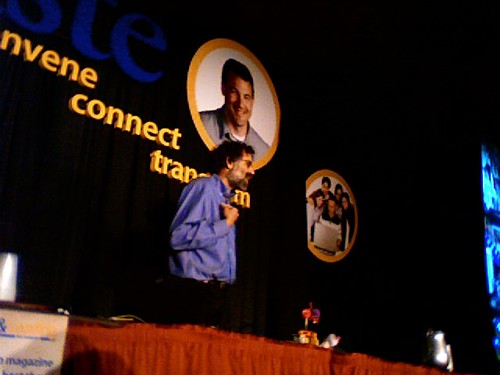
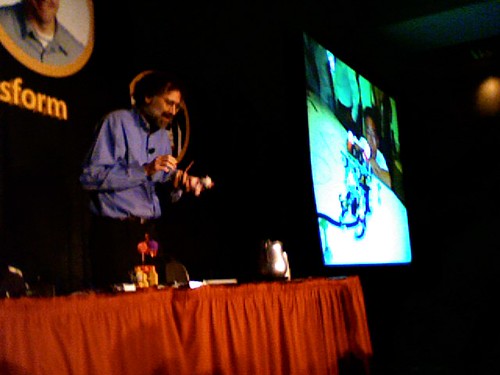
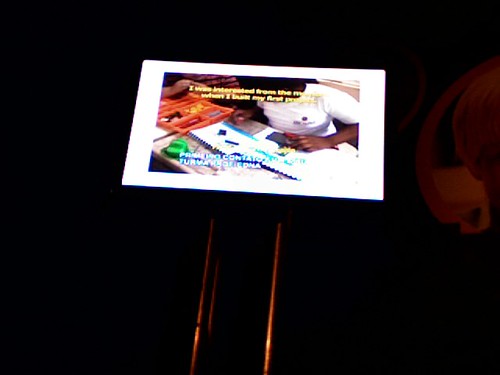
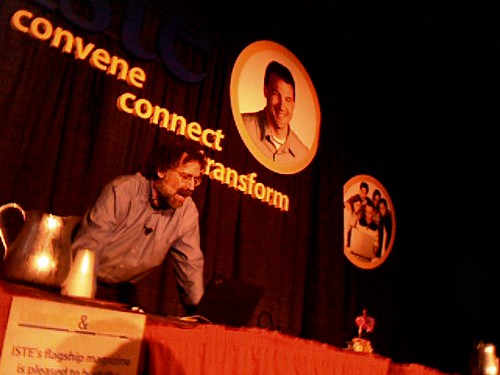
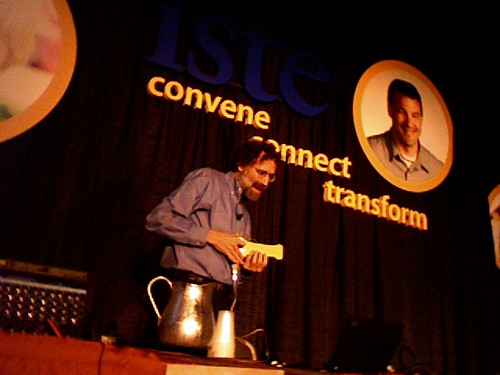
Comments
4 responses to “Grassroots Creativity: Helping Everyone Become a Creative Thinker by Dr. Mitchel Resnick (MIT Media Lab)”
I saw this same presentation at IL-TCE in February. Dr. Resnick’s talk was really great. A summer gifted camp that is using our district’s computer lab tried Scratch on my suggestion and it’s been a big hit. I’m hoping that I get find a way to get our kids to use it this year. You did a great job recapping Dr. Resnick’s discussion. Thanks so much.
I missed this one. Thanks for sharing. It reminds me of Dan Pink’s A Whole New Mind, a valuable read for every educator.
[…] AQUI (de onde foi retirada aimagem), podem encontrar: […]
[…] My text notes from this presentation (including some additional links) […]